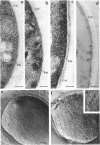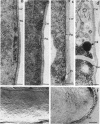Abstract
Ajoene, a garlic-derived compound that prevents platelet activation, inhibited the growth of Paracoccidioides brasiliensis, a fungal pathogen for humans, by affecting the integrity of the fungal cytoplasmic membrane. This action may be the basis for the study of ajoene as a possible specific antifungal drug.
Full text
PDF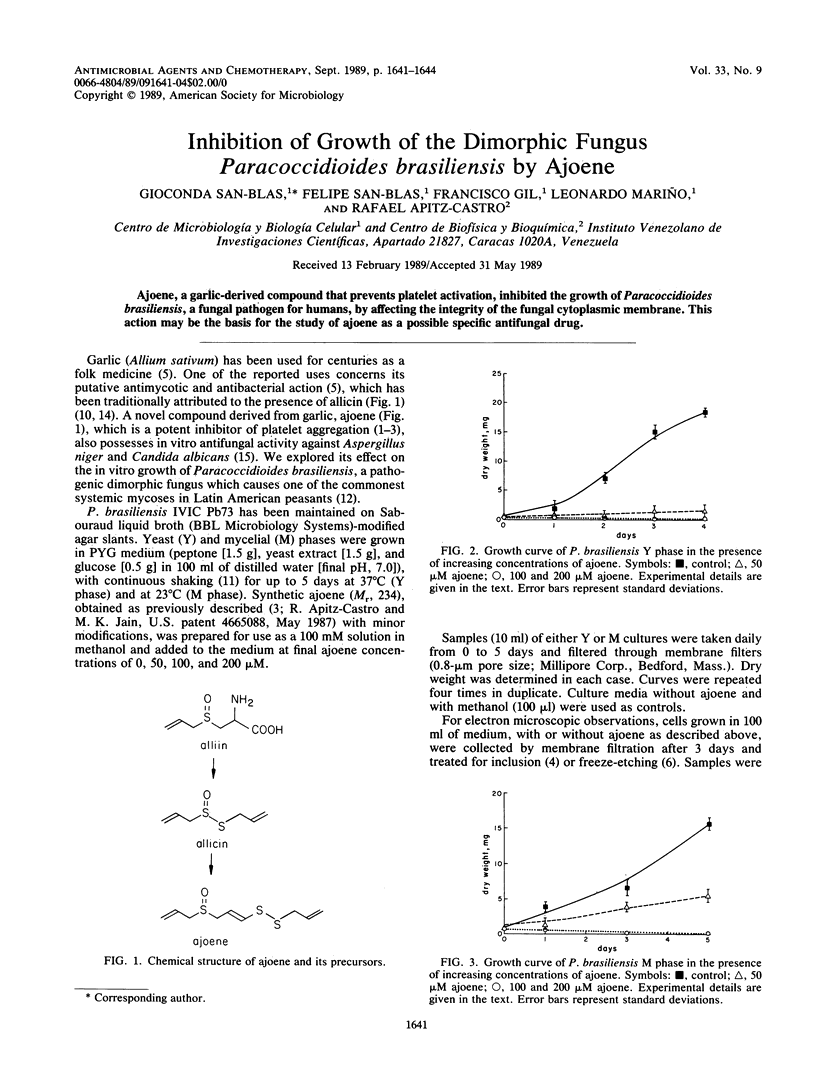
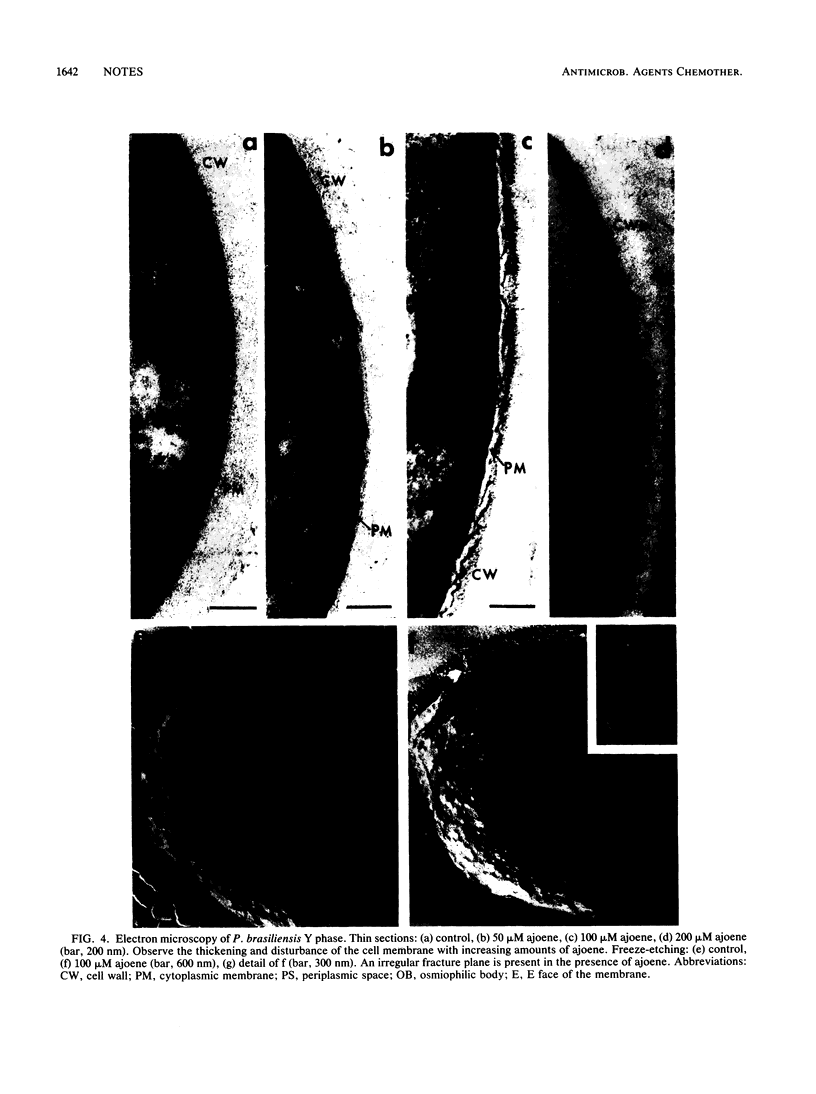
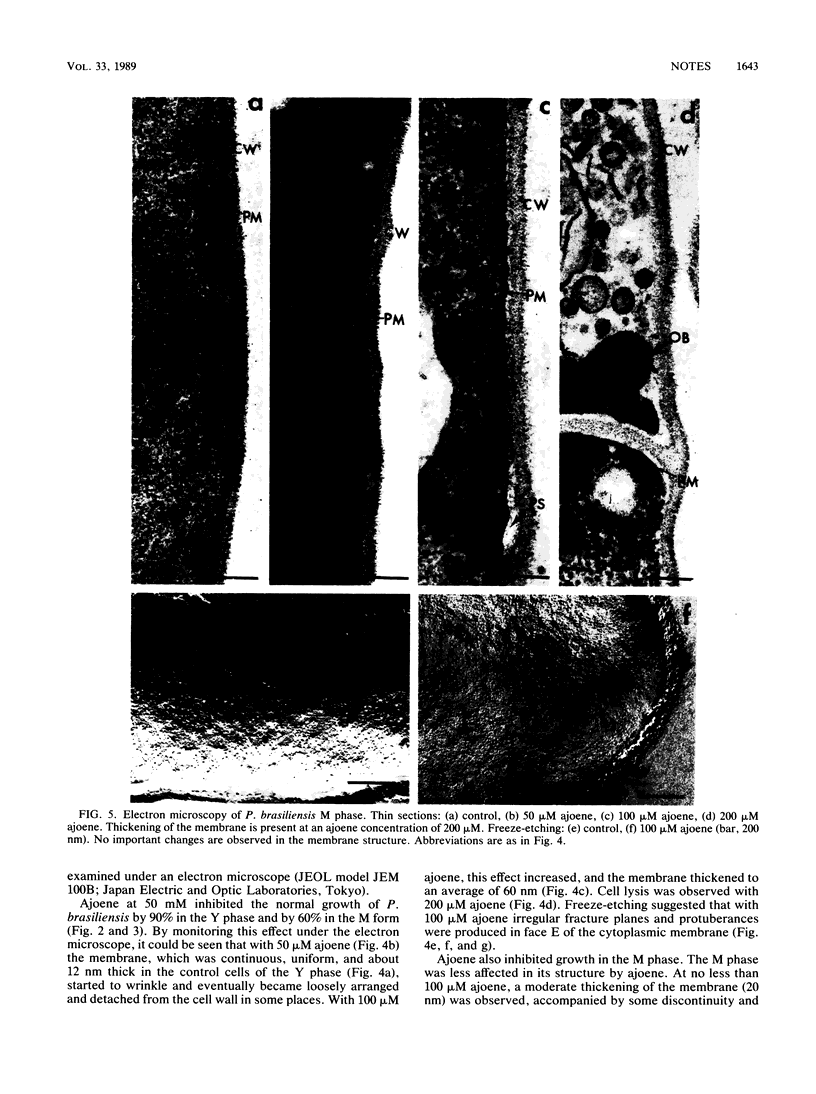
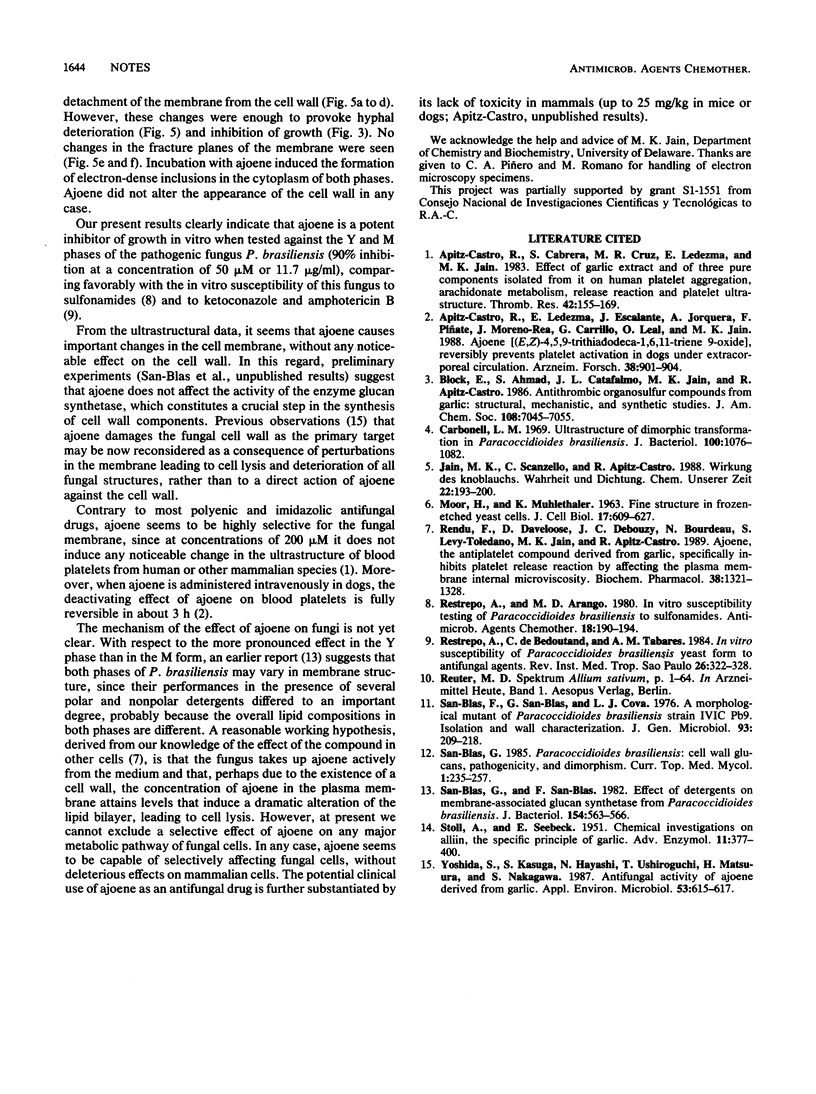
Images in this article
Selected References
These references are in PubMed. This may not be the complete list of references from this article.
- Apitz-Castro R., Cabrera S., Cruz M. R., Ledezma E., Jain M. K. Effects of garlic extract and of three pure components isolated from it on human platelet aggregation, arachidonate metabolism, release reaction and platelet ultrastructure. Thromb Res. 1983 Oct 15;32(2):155–169. doi: 10.1016/0049-3848(83)90027-0. [DOI] [PubMed] [Google Scholar]
- Apitz-Castro R., Ledezma E., Escalante J., Jorquera A., Pinãte F. M., Moreno-Rea J., Carrillo G., Leal O., Jain M. K. Reversible prevention of platelet activation by (E,Z)-4,5,9-trithiadodeca-1,6,11-triene 9-oxide (ajoene) in dogs under extracorporeal circulation. Arzneimittelforschung. 1988 Jul;38(7):901–904. [PubMed] [Google Scholar]
- Carbonell L. M. Ultrastructure of dimorphic transformation in paracoccidioides brasiliensis. J Bacteriol. 1969 Nov;100(2):1076–1082. doi: 10.1128/jb.100.2.1076-1082.1969. [DOI] [PMC free article] [PubMed] [Google Scholar]
- Rendu F., Daveloose D., Debouzy J. C., Bourdeau N., Levy-Toledano S., Jain M. K., Apitz-Castro R. Ajoene, the antiplatelet compound derived from garlic, specifically inhibits platelet release reaction by affecting the plasma membrane internal microviscosity. Biochem Pharmacol. 1989 Apr 15;38(8):1321–1328. doi: 10.1016/0006-2952(89)90339-0. [DOI] [PubMed] [Google Scholar]
- Restrepo A., Arango M. D. In vitro susceptibility testing of Paracoccidioides brasiliensis to sulfonamides. Antimicrob Agents Chemother. 1980 Jul;18(1):190–194. doi: 10.1128/aac.18.1.190. [DOI] [PMC free article] [PubMed] [Google Scholar]
- Restrepo A., Tabares C. de B. In vitro susceptibility of Paracoccidioides brasiliensis yeast form to antifungal agents. Rev Inst Med Trop Sao Paulo. 1984 Nov-Dec;26(6):322–328. doi: 10.1590/s0036-46651984000600006. [DOI] [PubMed] [Google Scholar]
- San-Blas F., San-Blas G., Cova L. J. A morphological mutant of Paracoccidioides brasiliensis strain IVIC Pb9. Isolation and wall characterization. J Gen Microbiol. 1976 Apr;93(2):209–218. doi: 10.1099/00221287-93-2-209. [DOI] [PubMed] [Google Scholar]
- San-Blas G. Paracoccidioides brasiliensis: cell wall glucans, pathogenicity, and dimorphism. Curr Top Med Mycol. 1985;1:235–257. doi: 10.1007/978-1-4613-9547-8_9. [DOI] [PubMed] [Google Scholar]
- San-Blas G., San-Blas F. Effect of detergents on membrane-associated glucan synthetase from Paracoccidioides brasiliensis. J Bacteriol. 1982 Nov;152(2):563–566. doi: 10.1128/jb.152.2.563-566.1982. [DOI] [PMC free article] [PubMed] [Google Scholar]
- Yoshida S., Kasuga S., Hayashi N., Ushiroguchi T., Matsuura H., Nakagawa S. Antifungal activity of ajoene derived from garlic. Appl Environ Microbiol. 1987 Mar;53(3):615–617. doi: 10.1128/aem.53.3.615-617.1987. [DOI] [PMC free article] [PubMed] [Google Scholar]



